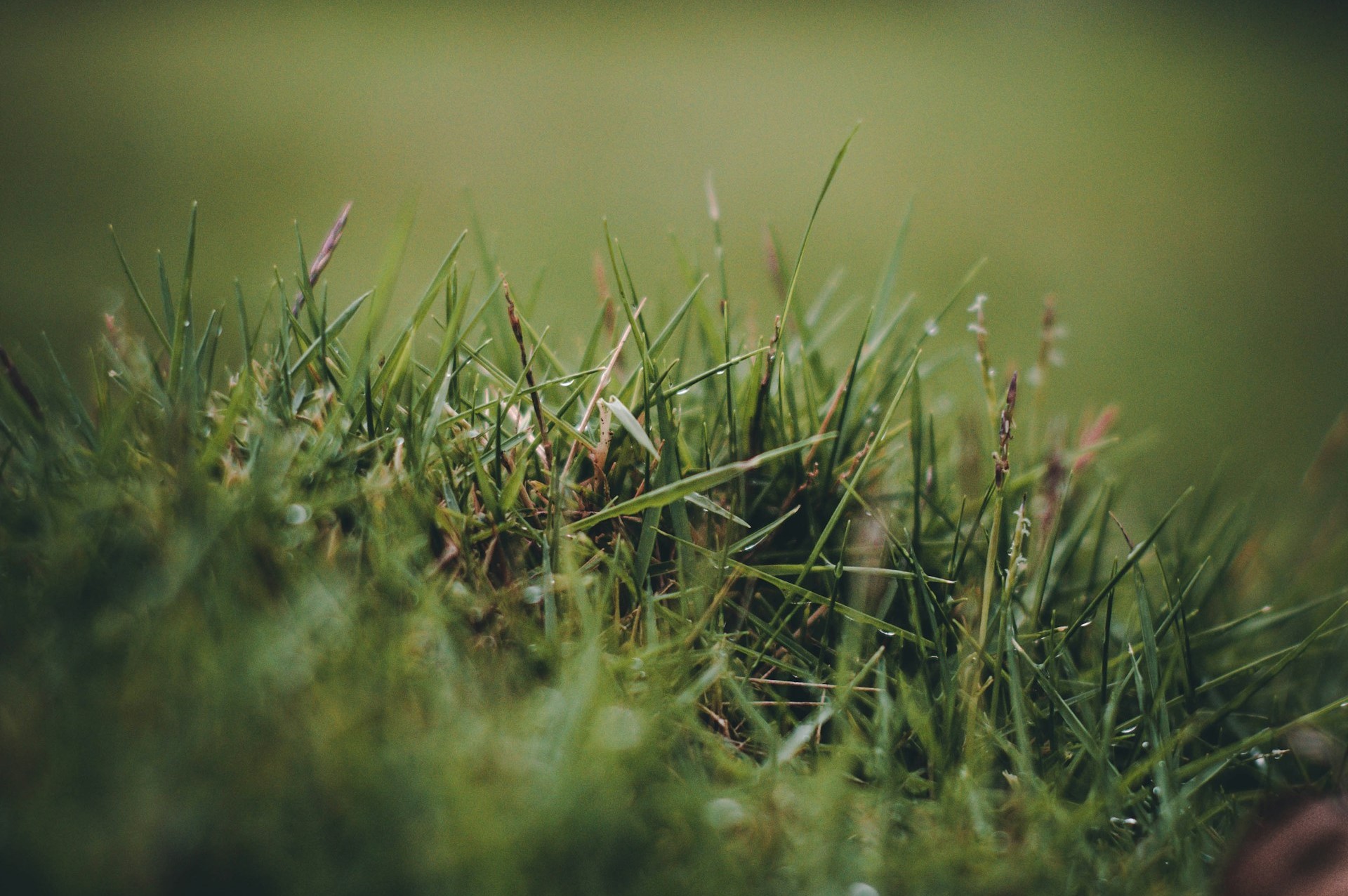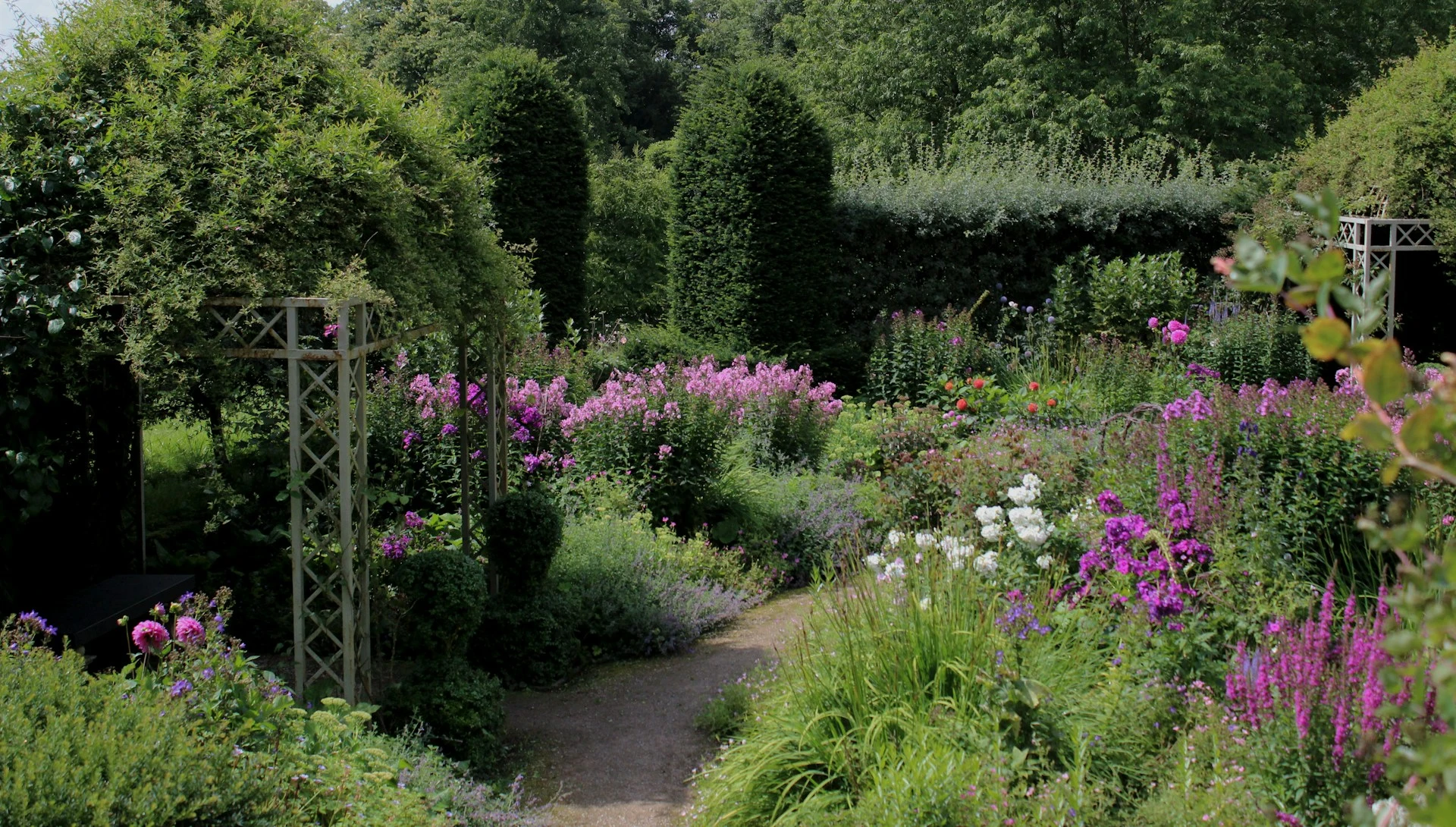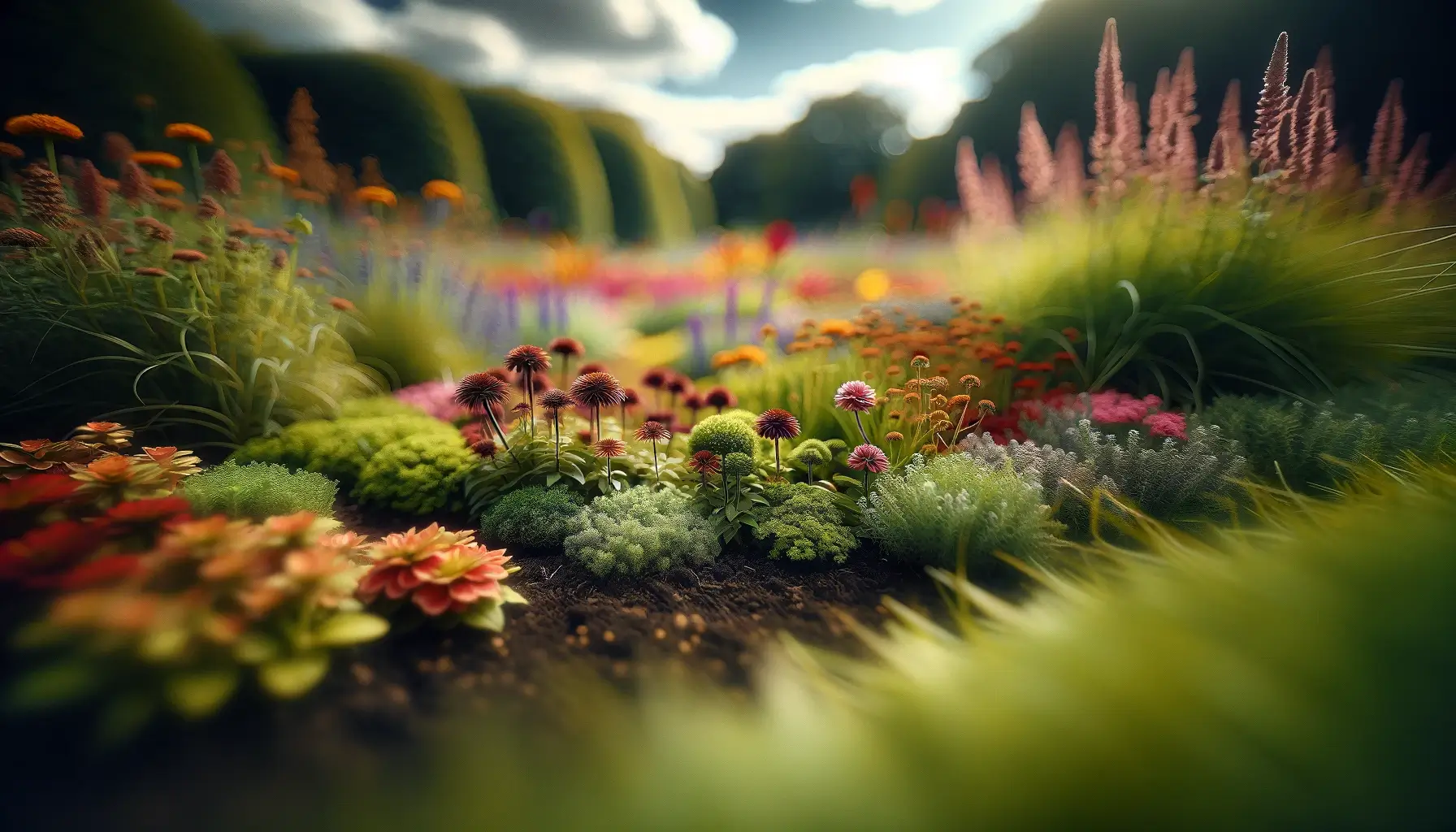In this blog post, we’ll cover:
ToggleIntroducing Vinca Plants
Vinca, also known as periwinkle, is a genus that includes several species of evergreen perennials. The two most commonly cultivated varieties are vinca major and vinca minor. These plants are favored for their glossy, dark green foliage and the simple yet stunning star-shaped flowers they produce. They have earned a reputation as a popular groundcover due to their sprawling habit and perseverance in a variety of conditions.
Overview of Vinca Major and Vinca Minor Varieties
Vinca major, often termed as greater periwinkle or blue periwinkle, is characterized by larger leaves and blooms compared to its counterpart, Vinca minor or lesser periwinkle. While Vinca major typically bears purple or blue flowers, it can sometimes produce white blooms. Vinca minor, on the other hand, has a more restrained growth habit with predominantly blue or purple flowers and occasionally white varieties.
These plants not only excel in aesthetics but are also known for their drought tolerance and low maintenance needs, making them excellent choices for both new and experienced gardeners. They are resilient and can thrive in many areas where other plants might struggle, making them a practical and attractive addition to the landscape.
Planting Vinca
When settling vincas into your garden, there are some straightforward steps to ensure they start off on the right foot.
Choosing Location with Full Sun to Partial Shade
Vincas perform well in various lighting conditions ranging from full sun to partial shade. However, to achieve the best growth and flower production, it is crucial to strike the right balance, especially considering the climate. In hot regions, where plants might require protection from the intense afternoon sun, partial shade may be more beneficial.
Preparing Soil by Amending with Compost
Ensuring the soil is well-prepared is key to the success of most garden plants, and vinca is no exception. The soil should be well-draining with a good amount of organic matter. Amending the garden bed with compost can improve drainage and add much-needed nutrients.
Spacing Plants 12-15 Inches Apart
When it’s time to plant your vinca, space them approximately 12-15 inches apart to allow for adequate air circulation and spreading. This spacing helps prevent many common plant diseases by reducing the humidity around the plant’s leaves and stems.
Watering Deeply After Planting
After planting, it is important to water the vinca deeply. This will help to settle the soil around the roots and provide the moisture necessary for the plants to establish themselves in their new environment.
The first part of this care guide provides an essential introduction and basic planting instructions for vinca, setting the stage for a thriving garden display. By following these initial steps, gardeners can ensure their vincas are positioned to grow healthily and be less susceptible to common gardening issues, leading to a lush and vibrant groundcover that will enhance any landscape. To maintain a pristine garden around your vincas, consider regular lawn maintenance services like those offered at The Friends Lawn Care, which can help retain the overall beauty and health of your outdoor spaces.
Planting Vinca
When adding vinca to your garden, selecting the right location is crucial for their success. These plants thrive in full sun to partial shade, with partial shade being preferable in hotter climates to protect them from scorching afternoon rays. To prepare the area for planting, enrich the soil by amending it with compost, which will create an ideal growing environment. Spacing is important—plant vinca 12-15 inches apart to give each plant enough room to grow and ensure proper air circulation, which is vital for preventing disease. Right after planting, give your vincas a thorough watering to help establish the roots.
| Planting Task | Description |
|---|---|
| Location Selection | Choose full sun to partial shade, with a nod to shade in hot climates. |
| Soil Preparation | Amend soil with compost for nutrients and improved drainage. |
| Plant Spacing | Set plants 12-15 inches apart to ensure space to spread and breathe. |
| Initial Watering | Water deeply after planting to encourage strong root development. |
Caring for Vinca Plants
Consistent watering is key to keeping vinca healthy—aim to keep the soil moist but not waterlogged. A good rule of thumb is to water weekly, depending on your climate and soil conditions. Feeding your vinca with a balanced, general-purpose fertilizer once or twice per season will support their growth and flowering. To help retain soil moisture and control weeds, apply a layer of mulch around the plants. Over time, vinca can become leggy; prune these stems back and deadhead spent flowers to encourage bushier growth and more blooms.
| Care Activity | Frequency | Tips |
|---|---|---|
| Watering | Weekly | Adjust based on weather and soil moisture levels. |
| Fertilizing | 1-2 times per season | Use a balanced, general-purpose fertilizer. |
| Mulching | As needed | Maintain a 2-3 inch layer to conserve moisture and suppress weeds. |
| Pruning & Deadheading | As needed | Cut back leggy growth and remove dead flowers. |
Propagating Vinca
Propagating vinca is straightforward, whether you start from cuttings or seeds. To propagate from cuttings, take healthy stems and root them in a potting mix. If you’re starting from seeds, sow them indoors and allow the seedlings to grow strong enough before transplanting outdoors. This method not only saves you money but also helps you to expand your vinca coverage and share plants with fellow gardeners.
By following these planting and care instructions, your vinca plants will be well on their way to becoming a beautiful and resilient part of your garden.
Remember that while vinca is low-maintenance, certain practices can enhance your plant care routine. Digging deeper into topics like troubleshooting common issues, understanding how to use vinca in your landscape designs, and learning about strategies for overwintering will ensure your plants not only survive but thrive throughout the seasons.
For more garden maintenance insights, consider reading about how to keep your grass green in the Texas heat at The Friends Lawn Care, which can be particularly relevant when maintaining a lush garden alongside your vibrant vinca groundcover.
Troubleshooting Vinca Problems
Even the most resilient plants like vinca can run into problems. Whether it’s a disease like root rot or a pest such as aphids and caterpillars, early identification and treatment are key to ensuring the vitality of your plants. Root rot usually occurs due to poor drainage, so it’s important to improve soil conditions to prevent water from pooling around the roots of your vinca.
Common Issues with Vinca
| Problem | Symptoms | Solutions |
|---|---|---|
| Diseases (e.g., root rot) | Yellowing leaves, wilting | Improve drainage, remove affected plants |
| Pests (e.g., aphids, caterpillars) | Visible insects, damaged foliage | Use insecticidal soaps or neem oil |
| Overwatering | Soggy soil, leaf drop | Reduce watering frequency |
For further assistance with common lawn problems, explore the comprehensive guide on how to fix a brown or yellow lawn in Texas.
Using Vinca in Landscapes
Vinca’s versatility makes it an excellent choice for various landscaping applications. It can provide a lush groundcover for large areas, serve as edging for beds and borders, and also looks beautiful spilling over the edges of hanging baskets.
Landscaping with Vinca
| Application | Description |
|---|---|
| Groundcover | Mass plantings create a carpet of green foliage and flowers. |
| Edging | Define pathways and garden edges with vinca borders. |
| Hanging Baskets | Allow vinca vines to trail over the edges for a cascading effect. |
Overwintering Vinca Plants
Vincas are generally hardy, but in cooler climates, they will benefit from some protection from frost and cold temperatures. As fall turns to winter, you might consider cutting back any dead growth and adding a layer of mulch for insulation. Come spring, divide overcrowded plants to maintain vigor and encourage more extensive spreading.
Overwintering Vincas
| Task | Purpose |
|---|---|
| Frost Protection | Mulch and cover to shield from cold. |
| Pruning | Cut back dead stems in early spring. |
| Dividing | Separate crowded plants to revitalize growth. |
Popular Vinca Varieties
Vinca minor is the more restrained of the two common species, with small leaves and charming purple or blue flowers, while Vinca major boasts larger leaves and flowers that range from white to purple. Both have their place in the garden, and the choice between them often comes down to personal preference and the scale of the planting site. There are also newer hybrids and cultivars offering an array of flower colors and variegated foliage to suit different landscape designs.
Benefits of Vinca Plants
Few groundcovers can match vinca for their low maintenance and drought tolerant nature. Their long blooming period, generally from spring to fall, provides consistent color in the garden. Additionally, they are notably deer and rabbit resistant, which can be a significant advantage in areas with active wildlife. The splash of color that vincas contribute can indeed brighten shady areas where other flowering plants might not perform as well.
Tips for Growing Vinca Successfully
For the best results in growing vinca:
- Ensure they’re planted in well-draining soil to prevent waterlogging.
- Fertilize regularly during the growing season with a balanced fertilizer.
- Water your vinca weekly, but avoid overwatering, which can lead to root rot.
- Prune and deadhead to promote fuller plants and continuous flowering.
Conclusion
In this comprehensive guide, we’ve detailed everything you need to know about vinca care. From selecting the right location and proper planting techniques to ongoing care, propagating new plants, troubleshooting common issues, and using vinca in your landscaping design, these hardy plants provide an array of benefits for gardeners. By following these guidelines, you’ll ensure your vinca plants remain healthy, vibrant, and a joy to behold throughout their long blooming period.
Whether you’re a seasoned green thumb or a budding gardener, incorporating vinca into your landscape offers a reliable and attractive solution to a variety of gardening challenges. Remember, regular care and maintenance will keep your garden in top shape, complementing the beauty of your vincas. To help manage this task, you might want to consider the services provided by The Friends Lawn Care.
Embrace these tips for growing vinca successfully, and enjoy the lush, low-maintenance beauty they bring to your garden all season long.







